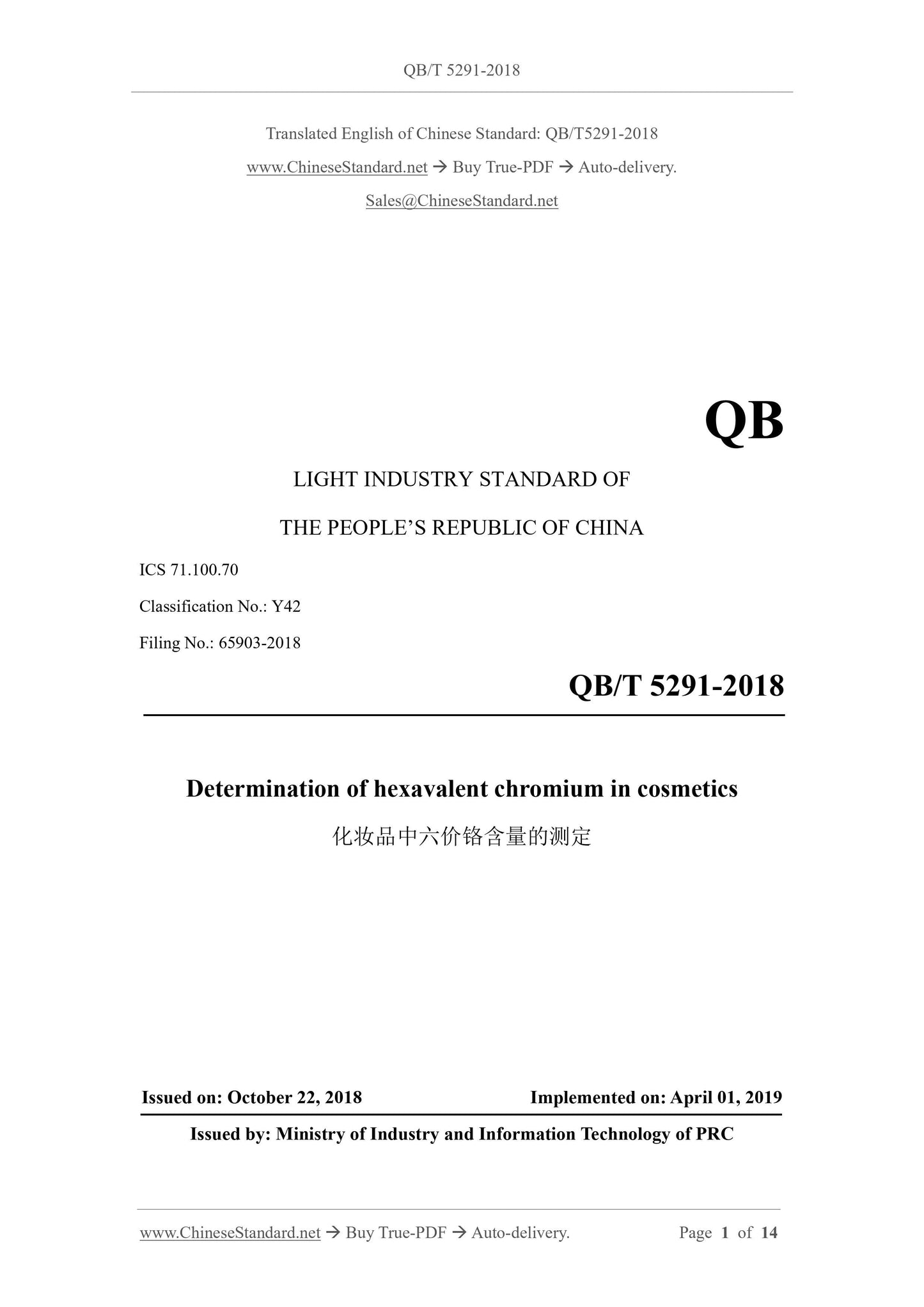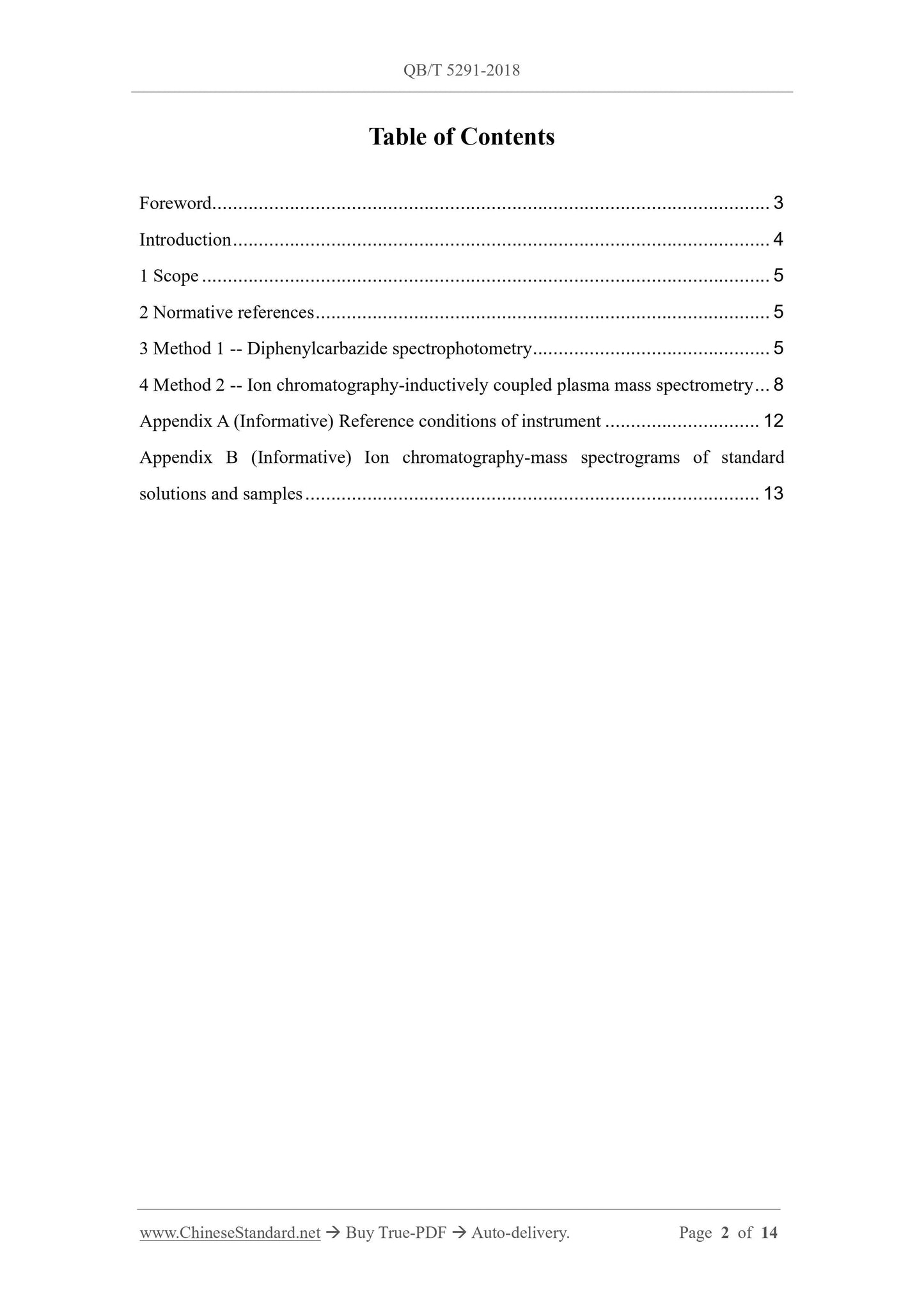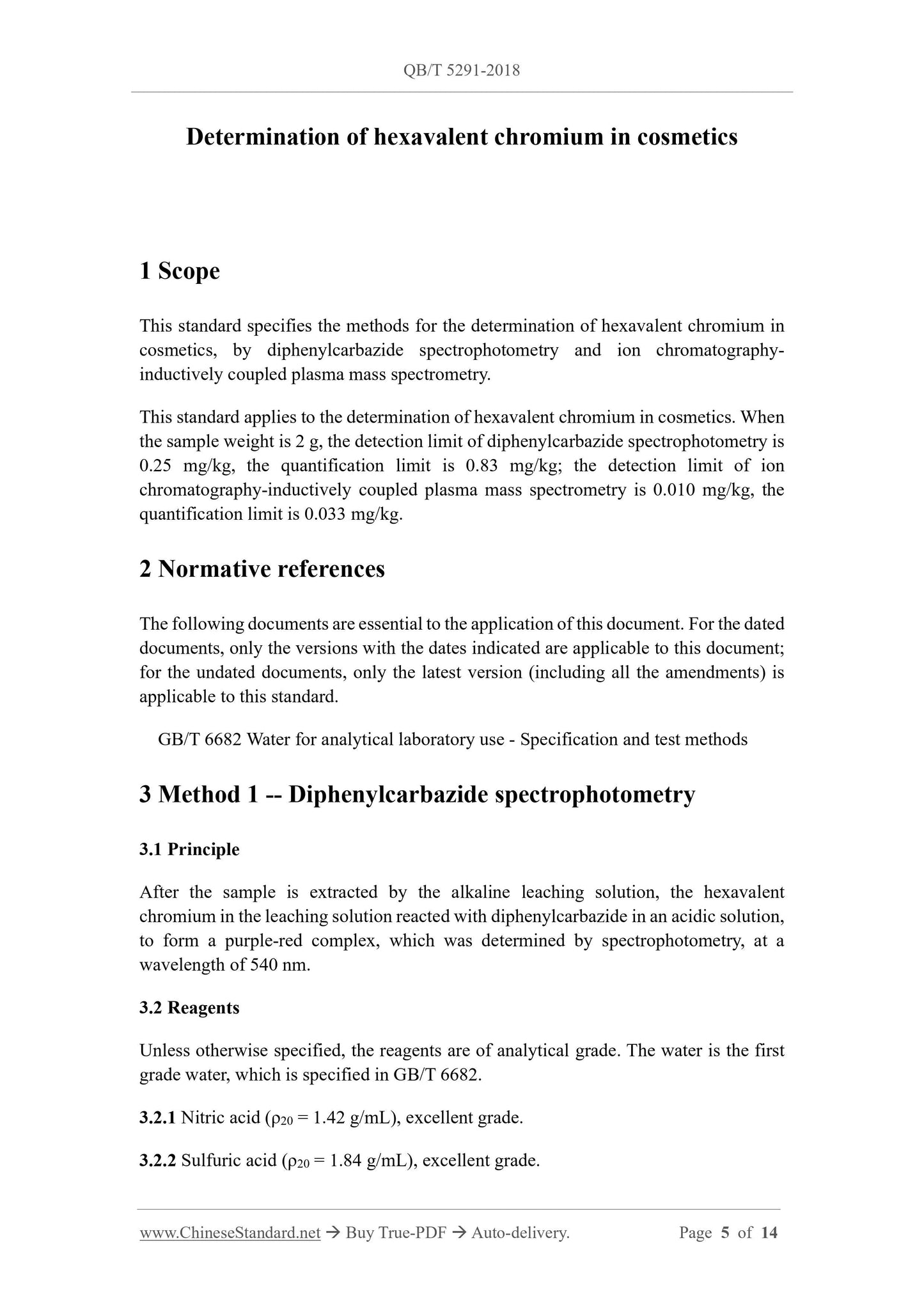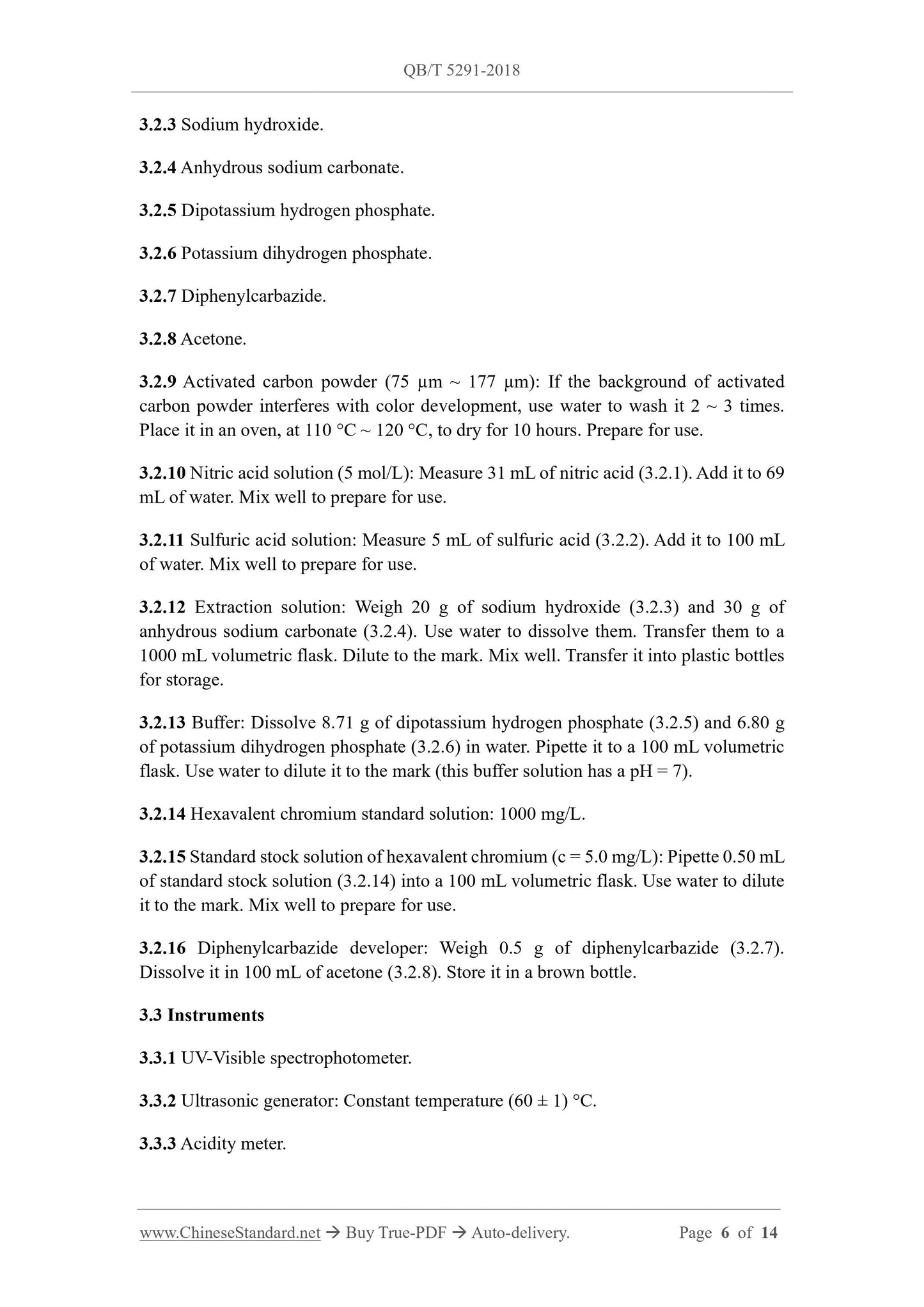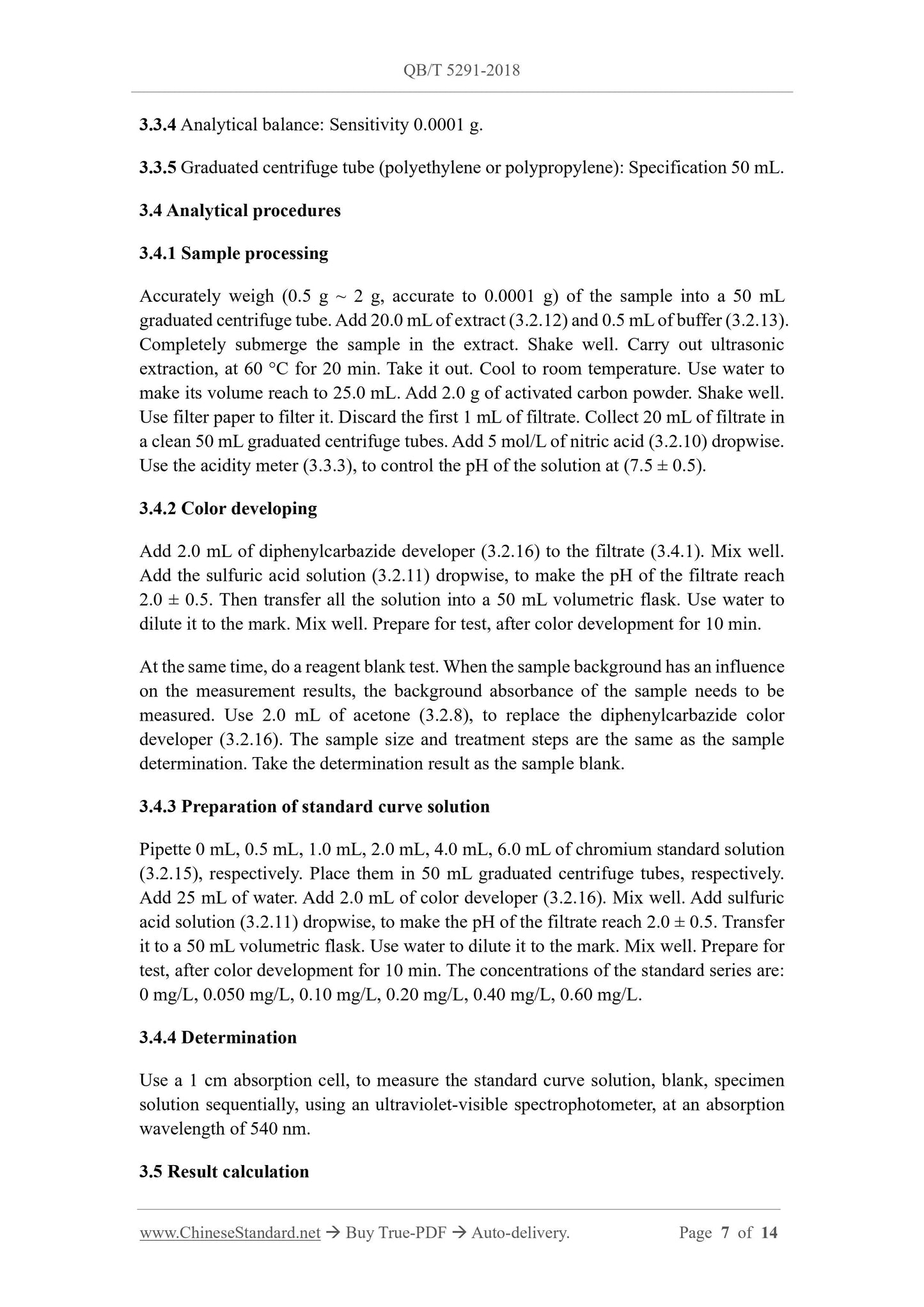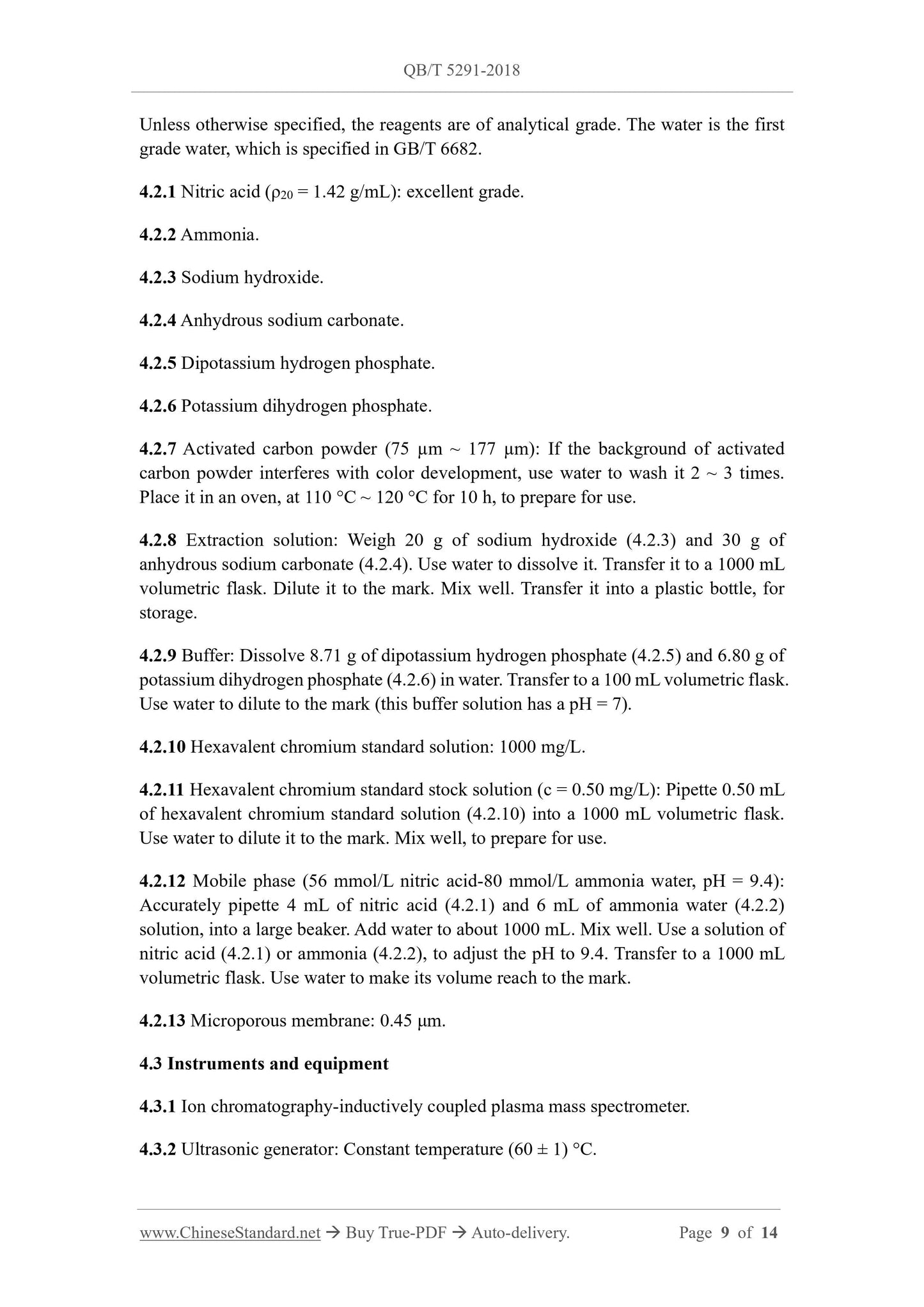1
/
of
6
www.ChineseStandard.us -- Field Test Asia Pte. Ltd.
QB/T 5291-2018 English PDF (QB/T5291-2018)
QB/T 5291-2018 English PDF (QB/T5291-2018)
Regular price
$185.00
Regular price
Sale price
$185.00
Unit price
/
per
Shipping calculated at checkout.
Couldn't load pickup availability
QB/T 5291-2018: Determination of hexavalent chromium in cosmetics
Delivery: 9 seconds. Download (and Email) true-PDF + Invoice.Get Quotation: Click QB/T 5291-2018 (Self-service in 1-minute)
Newer / historical versions: QB/T 5291-2018
Preview True-PDF
Scope
This standard specifies the methods for the determination of hexavalent chromium incosmetics, by diphenylcarbazide spectrophotometry and ion chromatography-
inductively coupled plasma mass spectrometry.
This standard applies to the determination of hexavalent chromium in cosmetics. When
the sample weight is 2 g, the detection limit of diphenylcarbazide spectrophotometry is
0.25 mg/kg, the quantification limit is 0.83 mg/kg; the detection limit of ion
chromatography-inductively coupled plasma mass spectrometry is 0.010 mg/kg, the
quantification limit is 0.033 mg/kg.
Basic Data
| Standard ID | QB/T 5291-2018 (QB/T5291-2018) |
| Description (Translated English) | Determination of hexavalent chromium in cosmetics |
| Sector / Industry | Light Industry Standard (Recommended) |
| Classification of Chinese Standard | Y42 |
| Classification of International Standard | 71.100.70 |
| Word Count Estimation | 9,962 |
| Date of Issue | 2018-10-22 |
| Date of Implementation | 2019-04-01 |
| Quoted Standard | GB/T 6682 |
| Regulation (derived from) | Ministry of Industry and Information Technology Announcement No.54 of 2018 |
| Issuing agency(ies) | Ministry of Industry and Information Technology |
| Summary | This standard specifies the method for the determination of hexavalent chromium in cosmetics by diphenylcarbazide spectrophotometry and ion chromatography-inductively coupled plasma mass spectrometry. This standard applies to the determination of hexavalent chromium content in cosmetics. When the sample weight is 2g, the detection limit of diphenylcarbazide spectrophotometry is 0.25mg/kg, the limit of quantification is 0.83mg/kg; the detection limit of ion chromatography-inductively coupled plasma mass spectrometry is 0.010mg /kg, the limit of quantification is 0.033 mg / kg. |
Share
